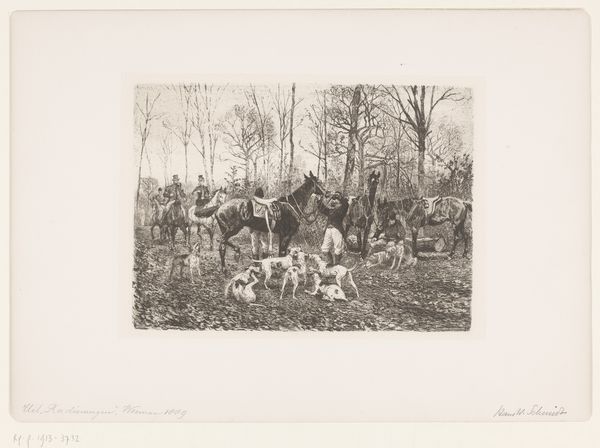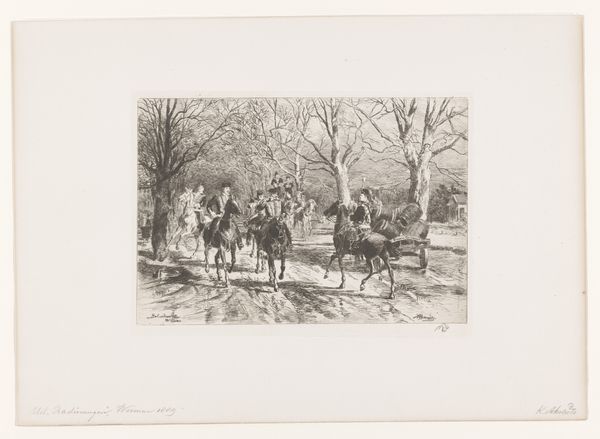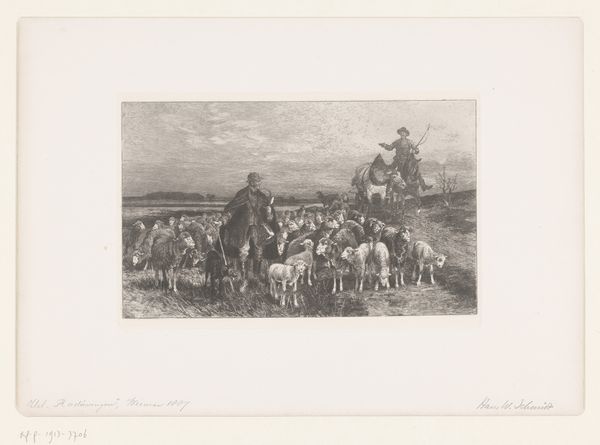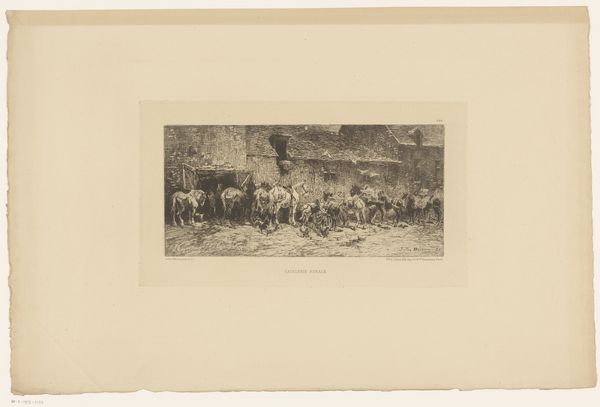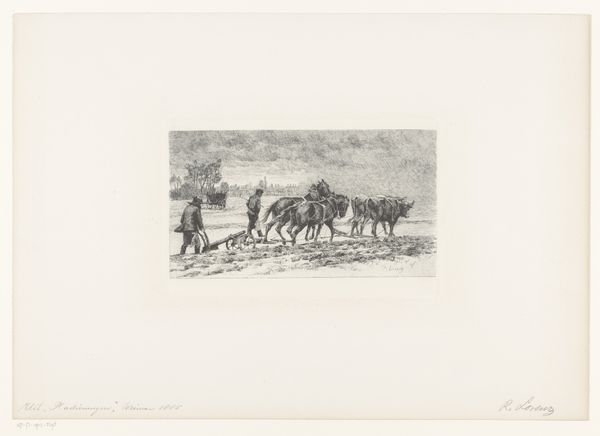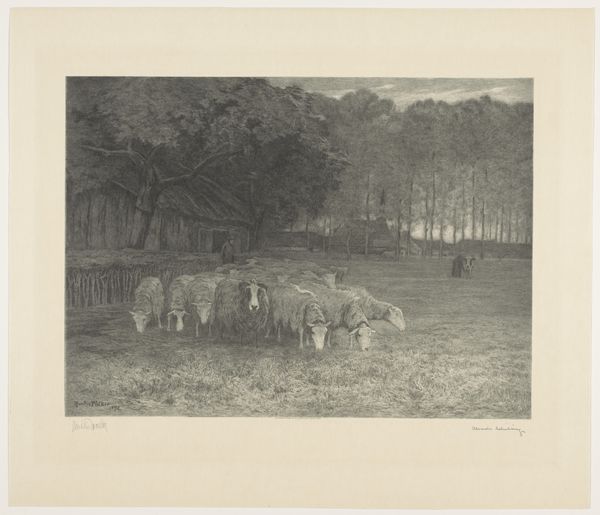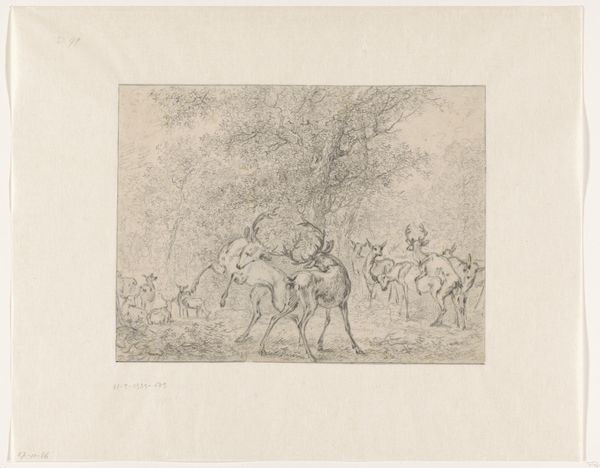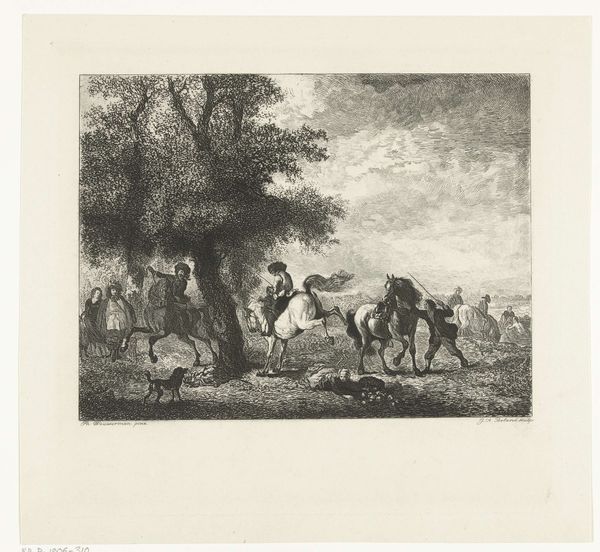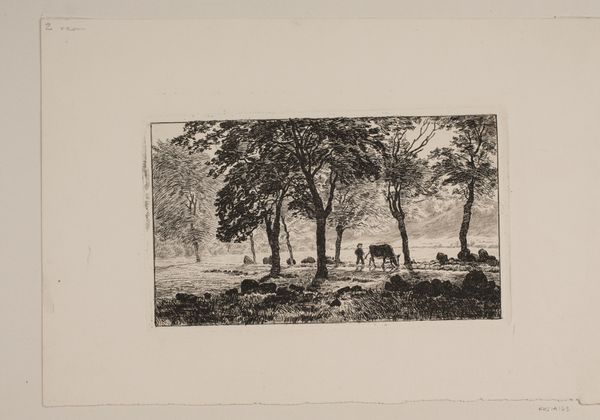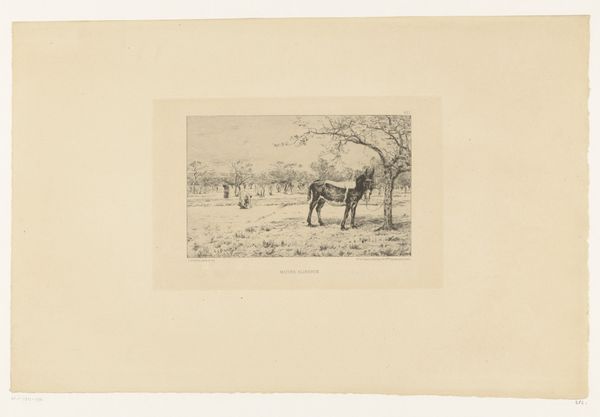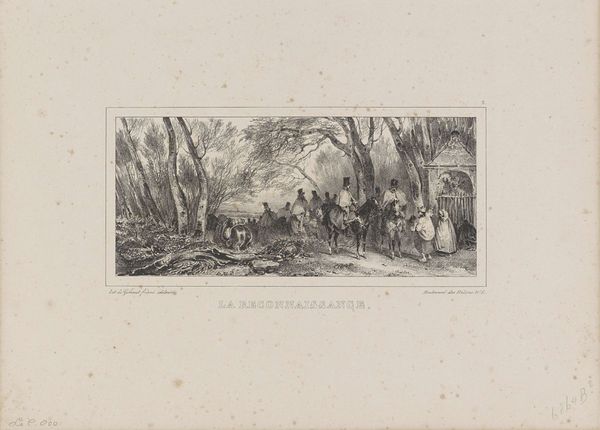
drawing, print, ink, engraving
#
drawing
# print
#
landscape
#
ink
#
genre-painting
#
engraving
#
realism
Dimensions: height 197 mm, width 297 mm
Copyright: Rijks Museum: Open Domain
Editor: Here we have Conrad Ahrendts' "Two Soldiers on Horseback Greeting Ladies in a Four-in-Hand," likely from 1883, a print in ink. I’m immediately struck by how meticulously detailed the scene is. What's your take on it? Curator: This piece provides a fascinating glimpse into 19th-century social dynamics and class structures. The encounter between military figures and women in a carriage immediately begs questions about power, gender, and visibility. Consider the context: what might a woman’s role be in the public sphere at this time? And how do these encounters shape our understanding of both the subjects' identities? Editor: So you're suggesting that what appears to be a simple genre scene might be telling us something about gendered spaces. How so? Curator: Exactly! Think about how women's mobility was often mediated through conveyances like carriages. These spaces, while enabling movement, also created a specific kind of enclosure or display. The greeting from the soldiers—uniformed, representing authority—intersects with the private sphere of the carriage in a highly charged tableau. What kind of message would such visual rhetoric broadcast in the context of late 19th century social hierarchy? Editor: That makes me rethink the image entirely. The landscape initially struck me as just background, but now I wonder if it, too, plays into the scene. Curator: Precisely! It's not just a picturesque backdrop. The landscape participates in creating the social context within which the interaction occurs, adding layers of complexity to this ostensibly straightforward interaction. Where does that landscape open and confine our reading of the scene? Editor: I never would have looked at it that way! I was focused on the aesthetic of the engraving itself. Curator: It’s all about engaging with the piece on multiple levels—analyzing its formal qualities while also deconstructing the social and historical narratives it presents. Always ask what an apparently harmless scene subtly affirms! Editor: This has completely reshaped how I see 19th-century art. I'll definitely be more conscious of these power dynamics in future observations.
Comments
No comments
Be the first to comment and join the conversation on the ultimate creative platform.

